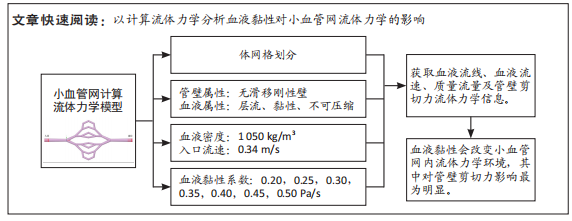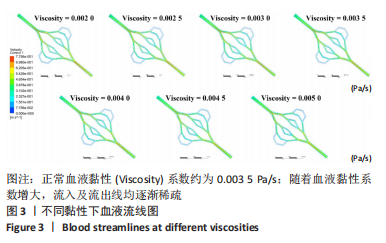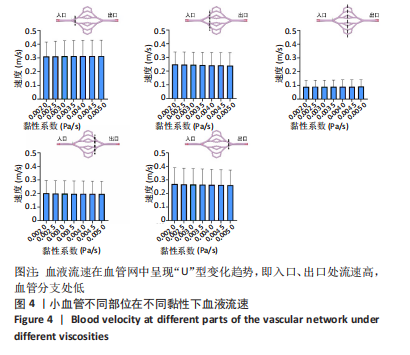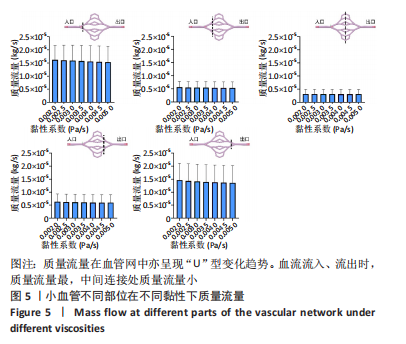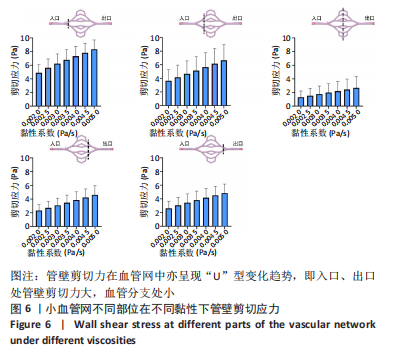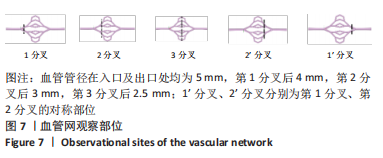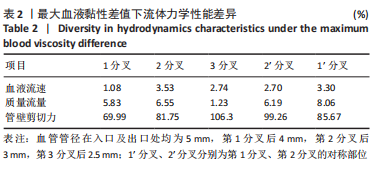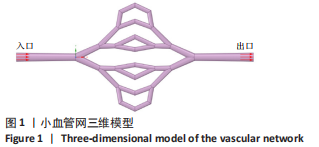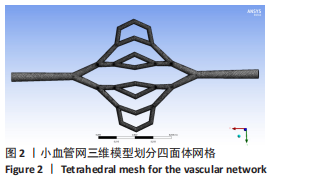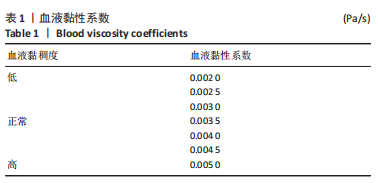[1] RACHNER TD, KHOSLA S, HOFBAUER LC. Osteoporosis: now and the future. Lancet. 2011;377(9773):1276-1287.
[2] 陈培生, 林小凤, 林凤飞, 等. H型血管耦联成血管-成骨机制在骨微环境重构机制的研究进展[J]. 中华创伤杂志,2021,37(11):1048-1054.
[3] ZHAO Y, XIE L. Unique bone marrow blood vessels couple angiogenesis and osteogenesis in bone homeostasis and diseases. Ann N Y Acad Sci. 2020;1474(1):5-14.
[4] KUSUMBE AP, RAMASAMY SK, ADAMS RH. Coupling of angiogenesis and osteogenesis by a specific vessel subtype in bone. NATURE. 2014; 507(7492):323-328.
[5] 郎爽, 陈恒亭, 马剑雄, 等. 骨科中的细胞力学研究进展[J]. 生物医学工程研究,2021,40(1):88-93.
[6] 李佳宜, 房兵. 力学因素对血管内皮细胞成血管影响及机制的研究进展[J]. 医用生物力学,2020,35(6):760-766.
[7] 王跃申, 于海奕, 徐明, 等. 计算流体力学在冠心病研究中的应用[J]. 生理科学进展,2021,52(4):241-245.
[8] ALBARRAN-JUAREZ J, IRING A, WANG S, et al. Piezo1 and Gq/G11 promote endothelial inflammation depending on flow pattern and integrin activation. J Exp Med. 2018;215(10):2655-2672.
[9] URBICH C, DERNBACH E, REISSNER A, et al. Shear stress-induced endothelial cell migration involves integrin signaling via the fibronectin receptor subunits alpha(5) and beta(1). Arterioscler Thromb Vasc Biol. 2002;22(1):69-75.
[10] 魏秋实, 邓伟民, 王海彬, 等. 补肾健脾化瘀方对去势骨质疏松大鼠血液流变学指标的影响[J]. 中华中医药杂志,2014,29(2):618-620.
[11] 欧建英, 梁翎彦, 黄裕桂, 等. 中药熏蒸对尺桡骨骨折内固定术后延迟愈合患者肘、腕关节功能和血液流变学的影响[J]. 中国康复医学杂志,2017,32(12):1370-1375.
[12] 张镝, 贾志杰, 田永利, 等. 补肾中药有效成分对大鼠骨损伤愈合及血液流变学的影响[J]. 中国组织工程研究与临床康复,2011, 15(24):4545-4548.
[13] 高戈, 吴轟, 田静, 等. 补肾活血祛痹方治疗膝骨关节炎临床疗效及其对血液流变学、抗炎、抗氧化的影响[J]. 中国中药杂志,2012, 37(3):390-396.
[14] 王晓燕, 李冠武, 常时新. 三七总皂苷通过血管生成改善绝经后骨质疏松机制探析[J]. 中国骨质疏松杂志,2014,20(8):964-967.
[15] 申震, 姜自伟, 李定, 等. 基于牵张成骨技术比较两种补肾法在成血管-成骨耦联机制中的作用差异[J]. 中华中医药杂志,2019, 34(5):2150-2155.
[16] LINDEMANN M C, LUTTKE T, NOTTRODT N, et al. FEM based simulation of magnetic drug targeting in a multibranched vessel model. Comput Methods Programs Biomed. 2021;210:106354.
[17] HAN X, COURSEAUS J, KHAMASSI J, et al. Optimized vascular network by stereolithography for tissue engineered skin. Int J Bioprint. 2018; 4(2):134.
[18] 韩金涛, 乔惠婷, 韩旭, 等. 椎基底动脉延长扩张症的计算流体力学分析[J]. 北京大学学报(医学版),2015,47(2):302-304.
[19] WU LT, WANG JL, WANG YL. Ophthalmic Artery Morphological and Hemodynamic Features in Acute Coronary Syndrome. Invest Ophthalmol Vis Sci. 2021;62(14):7.
[20] 卞庆来, 邹小娟, 沈霖. 青娥丸治疗绝经后骨质疏松症肾虚血瘀证的疗效观察[J].中华中医药杂志,2018,33(1):308-312.
[21] 眭承志, 周军, 刘志坤. 绝经后骨质疏松症血瘀病机的客观初步论证[J].中医研究,2005,18(1):30-33.
[22] SOUILHOL C, SERBANOVIC-CANIC J, FRAGIADAKI M, et al. Endothelial responses to shear stress in atherosclerosis: a novel role for developmental genes. Nat Rev Cardiol. 2020;17(1):52-63.
[23] HSU PL, CHEN JS, WANG CY, et al. Shear-Induced CCN1 Promotes Atheroprone Endothelial Phenotypes and Atherosclerosis. Circulation. 2019;139(25):2877-2891.
[24] 赵萍, 刘肖, 邓小燕. 层流剪应力抑制内皮细胞小管形成[J]. 医用生物力学,2019,34(S1):117-118.
[25] THONDAPU V, MAMON C, POON E, et al. High spatial endothelial shear stress gradient independently predicts site of acute coronary plaque rupture and erosion. Cardiovasc Res. 2021;117(8):1974-1985.
[26] DRIESSEN R, STASSEN O, SJOQVIST M, et al. Shear stress induces expression, intracellular reorganization and enhanced Notch activation potential of Jagged1. Integr Biol (Camb). 2018;10(11):719-726.
[28] BIXEL MG, KUSUMBE AP, RAMASAMY SK, et al. Flow Dynamics and HSPC Homing in Bone Marrow Microvessels. Cell Rep. 2017;18(7):1804-1816.
[29] 杨敏, 裴晓方. 高海拔民族地区健康人群血流变指标基本情况探索[J]. 现代预防医学,2019,46(9):1639-1643.
[29] 杨茜, 马杰, 王爽, 等. 体检人群血黏度差异及影响因素[J]. 中国老年学杂志,2019,39(8):1909-1911.
[30] Ko SH, Jung Y. Energy Metabolism Changes and Dysregulated Lipid Metabolism in Postmenopausal Women. Nutrients. 2021;13(12):4556.
[31] 刘芳, 黄海, 邓伟民, 等. 从骨质疏松骨小梁微血管变化剖析瘀血疼痛的基础[J]. 中国老年学杂志,2011,31(5):750-752.
[32] 眭承志, 刘志坤, 甘卫冬, 等. 围绝经期女性骨代谢与“血瘀”相关性研究[J]. 中国骨质疏松杂志,2016,22(11):1418-1424.
[33] Peng Y, Wu S, Li Y, et al. Type H blood vessels in bone modeling and remodeling. Theranostics. 2020;10(1):426-436.
[34] Claes L. Improvement of clinical fracture healing - What can be learned from mechano-biological research? J Biomech. 2021;115:110148.
[35] Ramasamy SK, Kusumbe AP, Schiller M, et al. Blood flow controls bone vascular function and osteogenesis. Nat Commun. 2016;7:13601.
[36] 袁翰. 补肾通络方激活HIF/VEGF信号通路促进骨质疏松大鼠模型的血管生成与抑制骨量流失[D]. 南京:南京中医药大学,2017.
[37] 关德强, 于波, 李欣, 等. 中药促进骨再生的研究进展[J]. 时珍国医国药,2018,29(4):956-958. |
